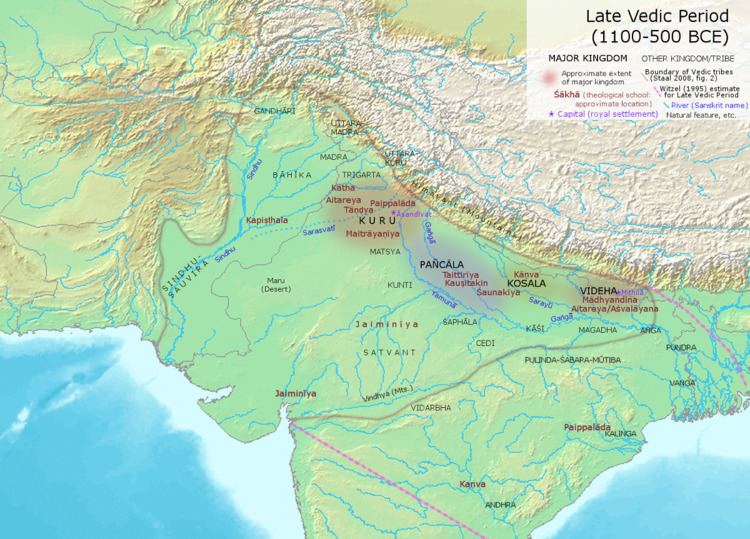Languages Maithili
Sanskrit Government Monarchy Established ca. 1400 BCE Capital Janakpur, Nepal | Religion Vedic-Hinduism Historical era Iron Age Disestablished 500 BCE | |
 | ||
Pondora videha original mix
Videha was an ancient kingdom in Vedic India established by King Janaka and based in Mithila, India. The kingdom's trans-boundary is presently located in Mithila region of Northern Bihar of India and the eastern Terai of Nepal. According to the sacred Ramayana, the capital of Videha kingdom is mentioned as Mithila.
Contents
During the late Vedic period (c. 1100-500 BCE), Videha became one of the major political and cultural centers of South Asia, along with Kuru and Pañcāla. Late Vedic literature such as the Brahmanas and the Brihadaranyaka Upanishad both mention Janaka, as a great philosopher-king of Videha, renowned for his patronage of Vedic culture and philosophy, and whose court was an intellectual centre for Rishi (sages) such as Yajnavalkya. Raychaudhuri suggests 14th- to 8th-century BCE range, while Witzel suggests c. 900 to 500 BCE for the Brahmanas and Upanishads composition period in Videha. The Vedic school of Aitareyins probably moved to Videha and other centers of scholarship, during the late Vedic period.
The region and culture of Videha is often mention in Hindu literature, states Samuel. The texts mention the idea of royal dynasty and the tradition of philosopher-kings who renounce, with examples including Nami (or Nimi in some texts), Janaka and other kings. Their stories are found in ancient surviving Hindu, Buddhist and Jaina texts, suggesting that renunciation by kings was a respected tradition before the birth of Buddha, and that this tradition was also broadly accepted in regions other than Videha, such as in Pancala, Kalinga and Gandhara. King Nimi or Nami of Videha is included as the 21st of the twenty four Tirthankaras in Jainism (not to be confused with closely spelled Nemi, the 22nd Tirthankara).
Towards the end of the Vedic period, Videha likely became part of the Vriji (Pali: Vajji) confederation and subsequently into the Magadha empire. The Videha kingdom is also mentioned in the Sanskrit epics, the Mahabharata and the Ramayana. In the Ramayana, Sita is the princess from Videha, who marries Rama creating an alliance between the kingdoms of Kosala and Videha. The capital of Videha was in Janakpur, a town presently located in Southern Nepal.
